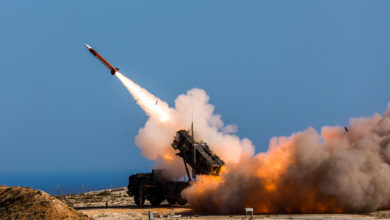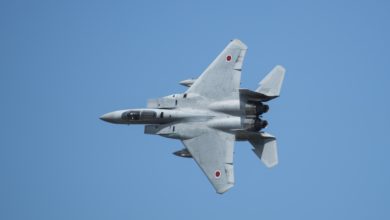US approves sales to Japan of 4 missiles to counter DPRK ballistic threat
Sale follows through on "President Trump’s commitment to provide additional defensive capabilities to treaty allies threatened by the DPRK’s provocative behavior"
The U.S. State Department approved the sale to Japan of four missiles used for ballistic missile defense, a Defense Security Cooperation Agency release said.
The potential sale includes four Standard Missile-3 Block IIA missiles along with missile canisters, U.S. government and contractor technical assistance, transportation, engineering and logistics support services, and other support and the total cost is estimated at $133.3 million, the Tuesday, January 9 release said.
This sale will “contribute to the foreign policy and national security of the United States by improving the security of a major ally,” and will “provide Japan with an increased ballistic missile defense capability to assist in defending the Japanese homeland and U.S. personnel stationed there,” the release said, adding that the missiles were intended for the Japan Maritime Self Defense Force.
The SM-3 Block IIA can be used on AEGIS-class destroyers or on land, via the AEGIS Ashore program.
Raytheon will make the missiles and BAE Systems will build the canisters.
A State Department official said the sale would enhance Japan’s ability to defend the western Pacific from ballistic missile threats and improve JMSDF interoperability with U.S. missile defense systems.
“This proposed sale will support the continued good health of the U.S. defense industrial base and provide jobs for the American worker,” the official said. “It would also follow through on President Trump’s commitment to provide additional defensive capabilities to treaty allies threatened by the DPRK’s provocative behavior.”

Standard Missile-3
The RIM-161 Standard Missile 3 is a missile system designed to intercept short- and intermediate-range ballistic missiles as a part of Aegis Ballistic Missile Defense System. It can also target satellites in low Earth orbit.
The SM-3 is a development of the SM-2 Block IV design, and Block I variants use the same solid rocket booster and dual thrust rocket motor for the first and second stages as well as the same steering control section and midcourse guidance. A third stage was added to the SM-3 containing a dual-pulse rocket motor for exo-atmospheric flight.

The Block II variants are significant modifications from Block I and are designed to enable Japan to protect against a North Korean attack with fewer deployed ships. Block II is jointly developed by Raytheon and Mitsubishi Heavy Industries, with Mitsubishi reportedly managing the third-stage rocket motor and nose cone.
Block IIA missile share only the first-stage motor with Block I, and have an increased diameter – 21 inches versus 13.5 inches – to improve ability against intermediate-range ballistic missiles.
The first successful test of the Block IIA variant occurred in 2015.
On February 3, 2017, the Missile Defense Agency said the USS John Paul Jones destroyed a medium-range ballistic missile using an SM-3 in a test in cooperation with Japan’s ministry of defense. In another test on June 21, an SM-3 launched by USS John Paul Jones did not intercept its target. The MDA later said that a sailor mistakenly designated the target as friendly, causing the SM-3 to self-destruct, as designed.












